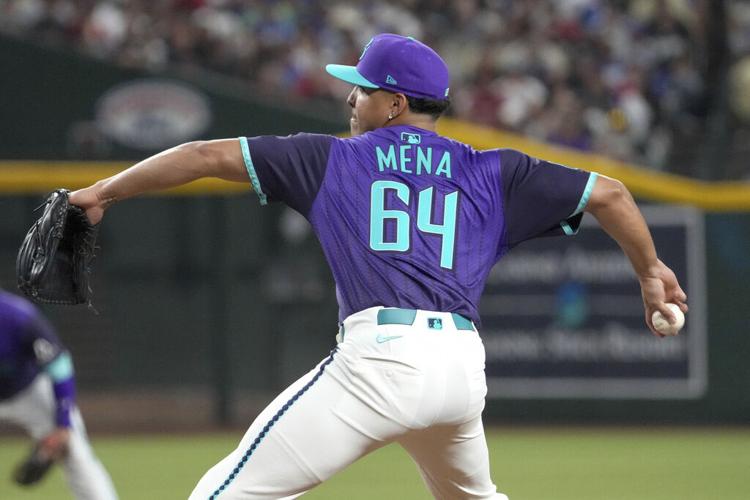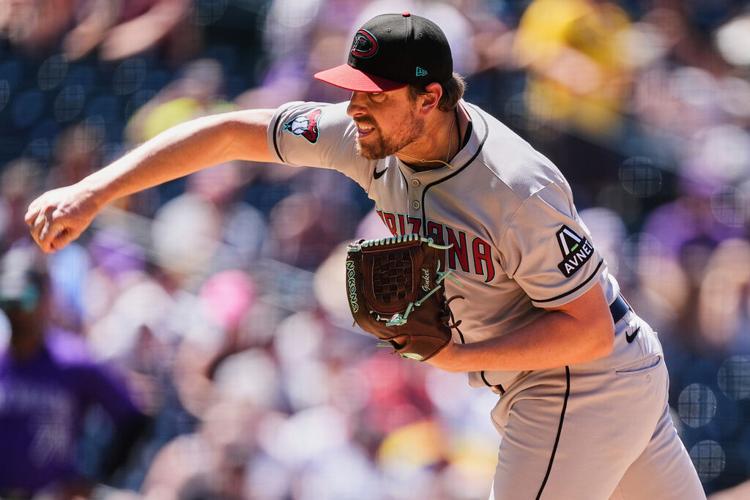The DiamondbacksŌĆÖ prolonged stumble into the All-Star break likely sealed their fate when it comes to this monthŌĆÖs trade deadline. They appear almost certain to sell.
And, assuming they do, their ideal return in trades would be to address the same commodity that has turned them into sellers in the first place: pitching.
ŌĆ£I would want to pull back pitching,ŌĆØ D-backs general manager Mike Hazen said last week when asked what he would do in the event he becomes a seller. ŌĆ£IŌĆÖm not saying that I would pass up value if itŌĆÖs that wide, but we are going to target pitching.ŌĆØ
Pitching injuries have wrecked the DiamondbacksŌĆÖ season ŌĆö and they threaten to torpedo next year, as well.
Right-hander Corbin Burnes, the clubŌĆÖs new $210 million starter, needed Tommy John surgery last month. Right-hander Justin Martinez and lefty A.J. Puk, the clubŌĆÖs top two relievers, also required season-ending elbow surgeries.
People are also reading…
Moreover, the club lost reliever Shelby Miller, left-hander Jordan Montgomery and depth starters Tommy Henry, Blake Walston and Cristian Mena to significant injuries.

Arizona Diamondbacks pitcher Cristian Mena throws against the Los Angeles Dodgers during the fourth inning on May 9 in Phoenix.
Burnes and Martinez likely wonŌĆÖt be back until late next season at the earliest; they could well miss the entire season. Puk could return sometime around the midway mark. The club is hopeful Mena will be back before the end of this year ŌĆö and thus should be healthy entering 2026 ŌĆö but he has now had shoulder issues each of the past two seasons.
But with right-hander Zac Gallen and Merrill Kelly set to hit free agency, the clubŌĆÖs only presumably healthy rotation pieces for the start of next year are right-handers Ryne Nelson, Brandon Pfaadt and Mena and left-hander Eduardo Rodriguez.
ŌĆ£There is clearly going to need to be additions from outside the organization,ŌĆØ Hazen said.
If he indeed sells, Hazen is hoping some of those additions will come at the deadline, with Gallen, Kelly, third baseman Eugenio Suarez and first baseman Josh Naylor looking like potentially attractive trade chips.
The team faces even more questions in the bullpen, with its only proven relief options for next year ŌĆö at least at this point ŌĆö being right-handers Ryan Thompson and Kevin Ginkel.

Arizona Diamondbacks relief pitcher Kevin Ginkel works against the Colorado Rockies in the sixth inning June 22, 2025, in Denver.
An issue Hazen expects to encounter, however, is hesitancy from buyers to part with their major-league-ready pitching depth.
According to sources, the Diamondbacks exhibited the same hesitancy last year at the deadline. Teams inquired about the availability of right-hander Slade Cecconi, but the D-backs opted to keep him in case they suffered a pitching injury. (They eventually traded Cecconi in the offseason as part of the return for Naylor.)
ŌĆ£Unless itŌĆÖs a pitching-rich team, I think the highest level of pitching we might have access to is a Double-A pitcher,ŌĆØ Hazen said. ŌĆ£I may take cracks at those guys just because weŌĆÖve got to build up the stable of pitching inventory that we have.
ŌĆ£Even if itŌĆÖs an ETA of the second half of 2026, itŌĆÖs valuable just to have that guy because you canŌĆÖt get them once they reach the majors.ŌĆØ
In the event he canŌĆÖt plug many of next yearŌĆÖs pitching holes at the deadline, Hazen does have a couple of things going for him.
For one, Arizona will have close to $70 million coming off the books with free-agent departures. While it is not clear where the payroll will land next year, it figures the Diamondbacks will have some money to spend in the winter.
Another positive, Hazen noted, is the number of position-player prospects the D-backs have accumulated over the past few seasons. They could serve as trade capital to land pitching, similar to how the club landed Mena in a deal with the Chicago White Sox for outfielder Dominic Fletcher.








